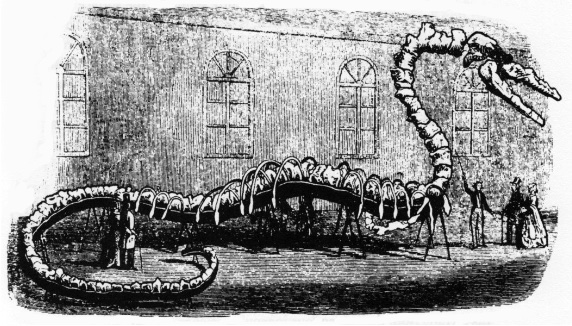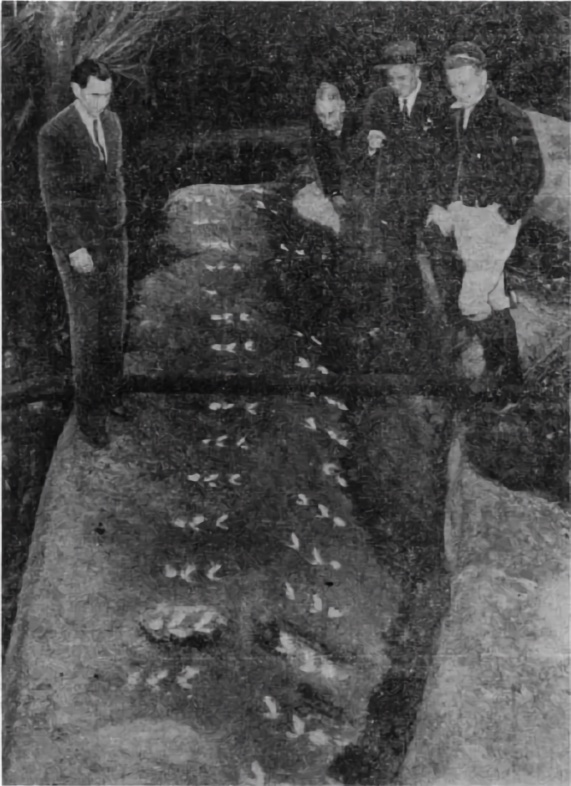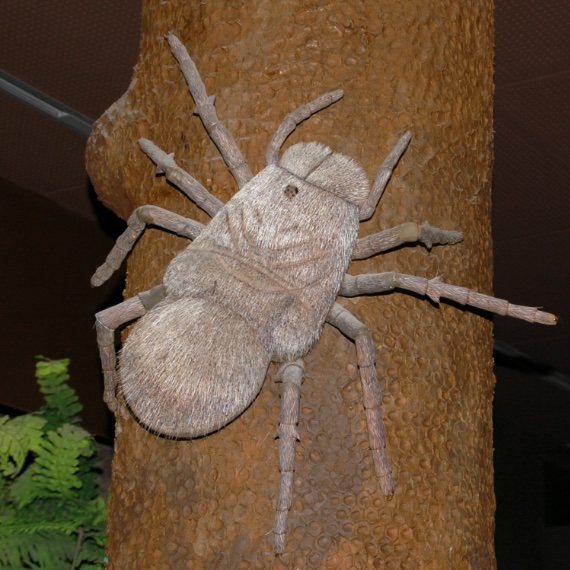Back in the day, when science was a less regulated and more rudimentary activity, the boundary between fact and fiction was sometimes blurred. For centuries, the tales of explorers and travellers gave rise to mythical creatures that were believed to be real, despite their non-existence. In this category, we naturally think of legendary animals from popular folklore—the so-called cryptids—such as the Loch Ness Monster, the Yeti, Bigfoot and the Chupacabra. However, beyond these well-known myths, there are other species whose existence found its way into encyclopaedias, science books and museums, and came to be seen as real by scientists and academics, until it was discovered that they were actually mistakes or hoaxes. And some of these cases are very recent.
THE VEGETABLE LAMB
The fake species that have fooled scholars are found not only in the animal kingdom, but also in the plant world. Believe it or not, there was a time when debate raged over the existence of a plant whose fruit was a tiny lamb. It was believed that the sheep remained attached to the plant by a stem, a kind of umbilical cord, and that it fed on the grass and plants it could reach until they were completely consumed, at which point both the sheep and the plant died.

The origin of this legend is uncertain, but it was popularised in Europe through The Travels of Sir John Mandeville, a 14th century work of dubious credibility and unknown authorship. The Vegetable Lamb of Tartary (present-day Siberia and adjacent regions) became the subject of scientific discussion during the Renaissance and in later centuries. Numerous naturalists and scientists wrote about it, including Erasmus Darwin, the grandfather of Charles. It came to be called Polypodium borametz or Agnus Scythicus, depending on the version, and appeared in encyclopaedias and dictionaries of natural science.
THE SHAM SEA SERPENT
Giant sea serpents are old acquaintances in the world of legendary creatures, but none of them have come as close to fooling the unwary as the one bearing the scientific name of Hydrarchos harlani and its fossilised skeletons once housed in two museums in Europe and the USA. The mastermind behind it all was Albert Koch, a German fossil collector and businessman based in the USA. In 1845, Koch described in great detail how he had discovered the fossilized remains of two 35-metre sea serpents in Alabama. He sold the two skeletons to museums in Prussia and Chicago, respectively, under the name Hydrarchos (“water king”) sillimani, after the American chemist Benjamin Silliman.

But when anatomist Jeffries Wyman laid eyes on the creature, he knew immediately that it was a fake: the body was a pastiche of prehistoric whale vertebrae from the genera Basilosaurus or Pontogeneus, and the skull was also clearly that of a mammal. Silliman demanded that his name be removed from the monstrosity, and Koch changed it to H. harlani in homage to the palaeontologist Richard Harlan, the discoverer of Basilosaurus, who could not protest, having died in 1843. Despite the discovery of the fraud, the Chicago skeleton remained on display until it was destroyed by the great fire of 1871.
THE GIANT CARBONIFEROUS FROG
On 28 November 1948, the Pittsburgh Post-Gazette newspaper reported the discovery of a trail of fossilised footprints near that Pennsylvania city. The reporter was free to conclude that the prints appeared “as though made by a giant chicken as it hopped across the surface,” although scientists at the Carnegie Museum of Pittsburgh pointed out that the rock had been formed in the Carboniferous, 300 million years ago, long before dinosaurs—let alone chickens—appeared, at a time when insects and amphibians dominated the earth. Conclusion: the tracks must have been made by a giant jumping frog with legs about 80 centimetres apart.

The identity of this mysterious animal, some of whose footprints were transferred to the museum, was not known until 1983, when further examination revealed that the continuous central groove between the footprints did not correspond to a vertebrate. The conclusion was that it was probably a eurypterid, a type of giant Palaeozoic arthropod informally called a sea scorpion.
MEGARACHNE, THE WORLD’S LARGEST SPIDER
In 1980, Argentinian palaeontologist Mario Hünicken announced the discovery of a terrifying half-metre-long fossil spider that lived in the Carboniferous, 300 million years ago, and which he identified as a mygalomorph spider: a tarantula. The so-called Megarachne servinei was the largest spider ever known. Museums rushed to make reconstructions of the fearsome monster, and in 2005 a BBC documentary called Walking with Monsters included the appearance of such a tarantula hunting a Petrolacosaurus, a 40-centimetre lizard.

Only the giant tarantula never existed. It took the discovery of another example to realise that the missing parts of the original specimen revealed its true identity: it was a eurypterid, a sea scorpion. Today the animal retains its name, but not its identity. Interestingly, Hünicken and his collaborators published the new identification in 2005, when the BBC documentary was in production and could no longer be changed. Instead, the scenes with the spider were left in, but it was assigned to another group, Mesothelae, which were actually much smaller.
THE PENGUIN THAT TURNED OUT TO BE THREE DIFFERENT PENGUINS
The Hunter Island penguin, Tasidyptes hunteri, would not in itself have anything particularly novel about it compared to many other species discovered after their extinction. Its remains were described in 1983, shortly after being found on a small island off the north coast of Tasmania, Australia. The four bones recovered were radiocarbon dated to about 760 years, and the authors of the discovery found that they did not correspond to any of the species already known. Thus, the new penguin entered the scientific literature as an animal whose existence in the flesh we missed by a few hundred years.
But in 2017, the techniques that can now recover DNA from ancient remains discovered that the bones did not actually belong to one penguin, but to three different penguin species, all of them still alive and kicking: the fairy penguin (Eudyptula novaehollandiae), the Snares penguin (Eudyptes robustus) and the Fiordland penguin (Eudyptes pachyrhynchus). Coincidentally, specimens of all three species went to die in the same place and their bones got mixed together.
ARCHAEORAPTOR, THE FAKE DINOSAUR-BIRD
On 15 October 1999, National Geographic magazine organised a press conference in Washington to present a major find: Archaeoraptor liaoningensis, an Early Cretaceous fossil discovered in China that represented a new transitional species between carnivorous dinosaurs and birds. The magazine’s palaeontology editor, Christopher Sloan, wrote: “With arms of a primitive bird and the tail of a dinosaur, this creature found in Liaoning Province, China, is a true missing link in the complex chain that connects dinosaurs to birds.”

And so much so that it had traits of different animals. But this was because it was actually a jigsaw puzzle of different fossils, as various experts soon suspected: the tail belonged to a small dinosaur Microraptor, while the front part came from an extinct fishing bird known as Yanornis martini. The fossil was not a direct find, but had been illegally exported from China and purchased by a museum in the United States. It was later revealed that the publication of the (fake) new species had been rejected by the journals Nature and Science, but National Geographic decided to go ahead with the story anyway.
Comments on this publication